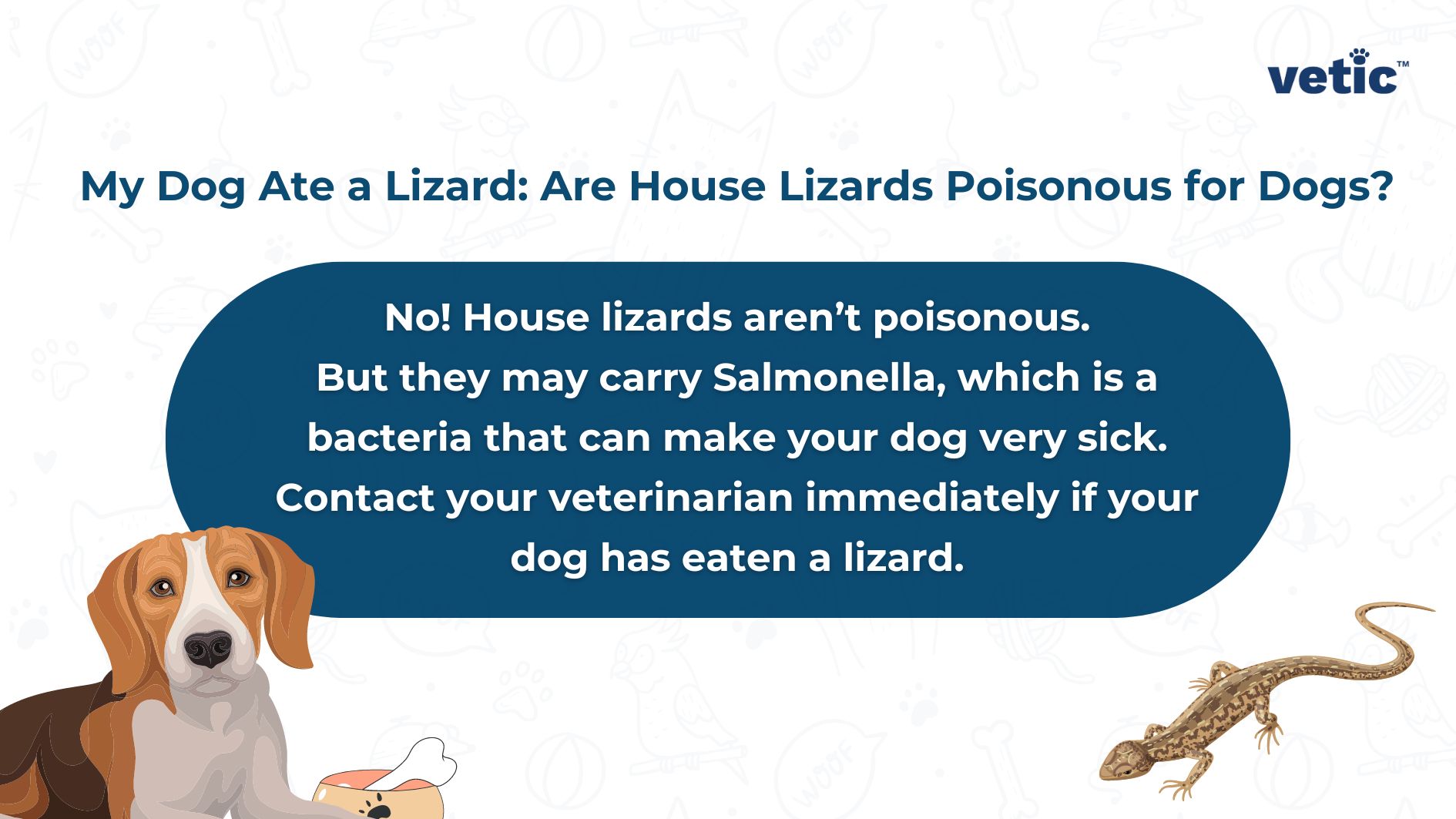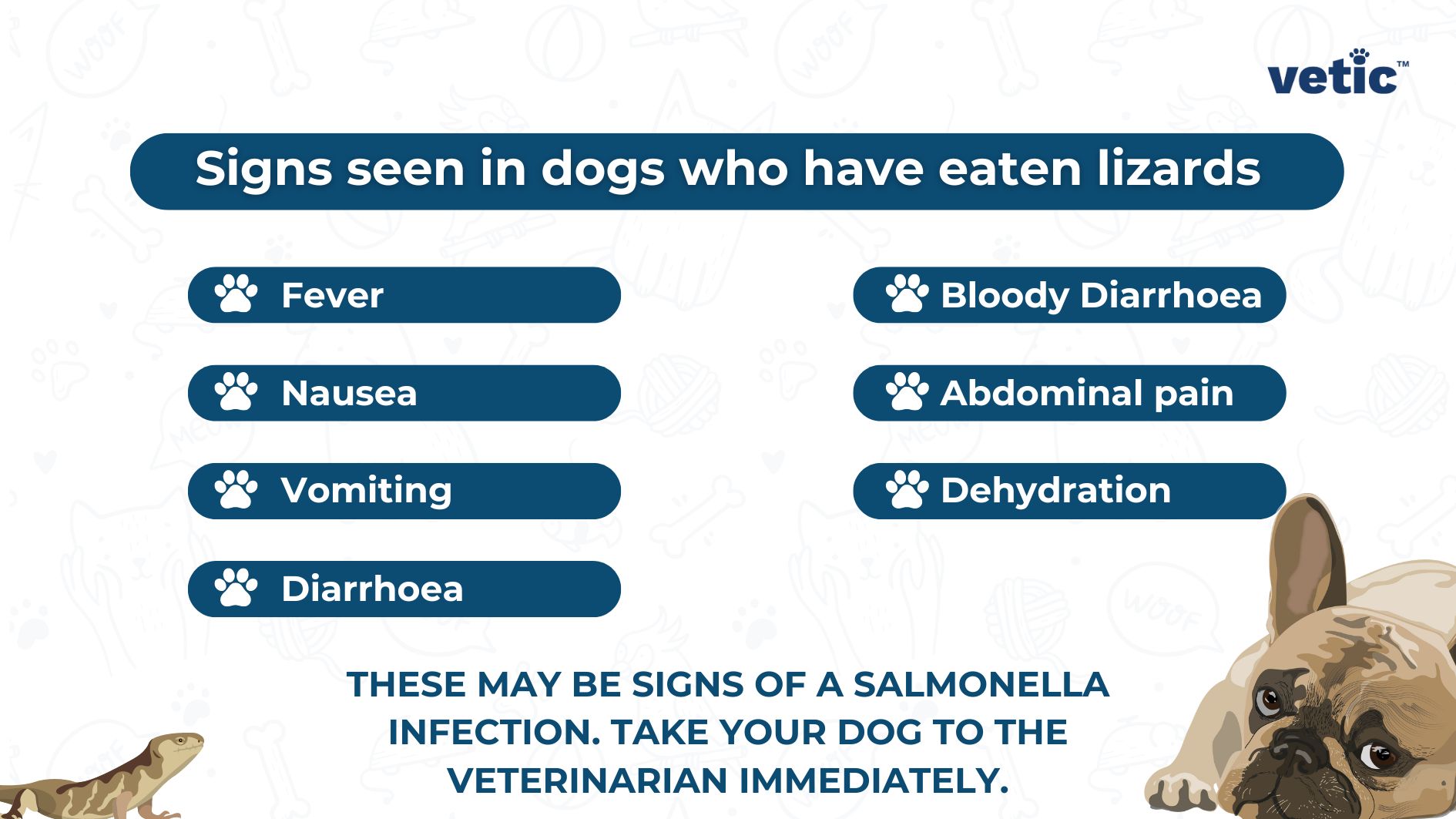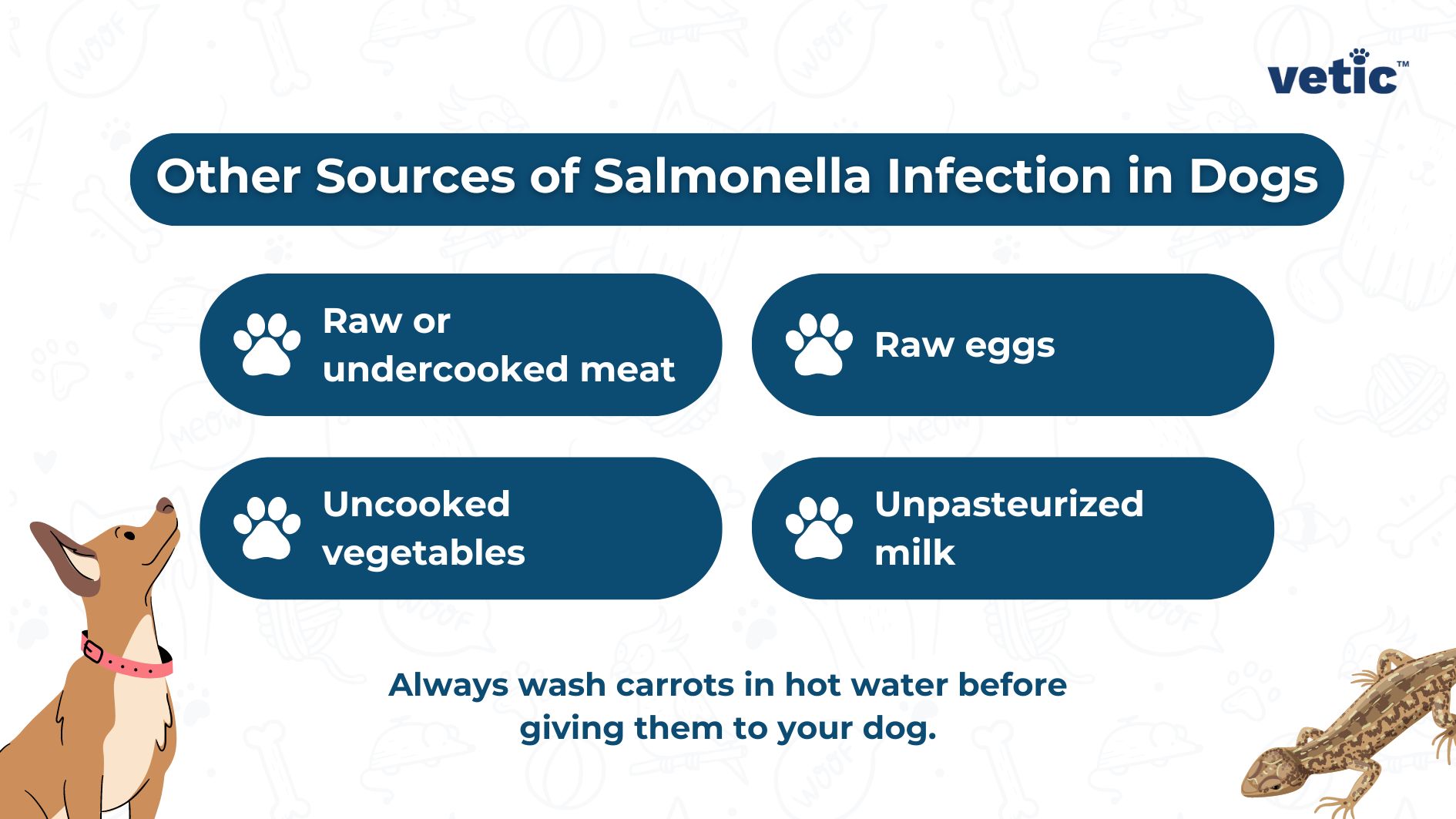My Dog Ate a Lizard: What Should I Do?
If you have seen your dog eat a lizard, you need to tell that to your veterinarian.
Although common house lizards aren’t poisonous, they can carry pathogens such as Salmonella which can cause serious illness in dogs.
In most cases, completely healthy dogs aren’t affected by one lizard. However, puppies, older dogs and dogs with existing gastric issues can become infected by Salmonella.
Are House Lizards Poisonous for Dogs?

House lizards or common geckos found in Indian homes are not poisonous or venomous. So, logically, if your dog has eaten a lizard, they are not at risk of being poisoned by it.
Why is Salmonella Infection in Dogs Dangerous?
Different strains of salmonella cause varying levels of severity in terms of infection. Salmonella commonly attacks the intestines of the dog that causes severe inflammation. It can cause stomach pain, cramps, and bloody diarrhea.
Some more virulent strains of the bacteria directly cause systemic infection without causing any signs of gastroenteritis. Once sepsis sets in, it’s extremely difficult to treat and the prognosis becomes “poor”.
Salmonella can roost inside the infected dog for weeks after the infection! The bacteria usually reside in the intestines, lymph nodes, liver and spleen of the dog. The bacteria are intermittently excreted with the stool, so it’s important for the pet parents to maintain proper hygiene around the house.
What are the Symptoms of Salmonella Infection in Dogs?

The signs of salmonella infection in dogs depends upon the dog’s coexisting health issues, overall health status, and the strain of the bacteria infecting the dog.
The most common symptoms of salmonella infection seen in dogs who have eaten lizards is the sudden onset of gastroenteritis.
The typical signs seen in dogs who have eaten lizards are –
- Fever
- Nausea
- Vomiting
- Diarrhoea
- Bloody diarrhoea
- Abdominal pain
- Dehydration
Salmonella infection in dogs can be very severe if left untreated. In most cases of dogs falling sick after eating lizards, these signs progress to sepsis, shock and death.
However, if proper treatment is provided on time, the prognosis can be fair.
Dog ate a Lizard: What’s the Diagnosis?
Okay! Before we begin thinking about lizard toxicity and poison, let’s give the simple explanations a thought.
If your dog has fallen sick after eating a lizard, you can always request your veterinarian for a stool culture of your dog to see if they indeed have a salmonella infection.
It is one of the easiest and most economical ways to check for salmonella infection in dogs.
The best way to get accurate results and avoid false negatives is by running tests during the early stages of the disease.
Is There Any Treatment for a Dog Eating a Lizard?
If your dog is already showing signs such as vomiting and diarrhoea, don’t forget to mention to your veterinarian that your dog has indeed eaten a lizard.
In most cases of mild infection, supportive treatment is enough and antibiotics aren’t required.
In cases of acute enteritis, your dog might require additional antibiotics. The result from the stool sample will determine which antibiotic will work best.
If your dog has been severely sick for a few days, they will require in-patient care to keep them hydrated and warm.
How to Handle Your Dog if They Have Gastroenteritis After Eating a Lizard?
It’s important to remember that some stomach infections in dogs can be contagious. Salmonella is no exception.
If you have a child at home, it’s best to keep your dog in the in-patient care until they recover.
You must wash your hands each time you handle your pet and you need to restrict your dog’s access to your bed, couch and other furniture until they fully recover from the stomach bug.
If you have other pets, you should separate them. Avoid any direct and indirect contact with the infected dog.
What are Other Sources of Salmonella Infection in Dogs?

Salmonella infection is rather common among dogs as well as humans.
It is a common bacteria found in –
- Raw or undercooked meat
- Raw eggs
- Uncooked vegetables
- Unpasteurized milk
So, if your dog loves munching on carrots, please be sure to wash them in boiling water before handing them out to your pupper.
